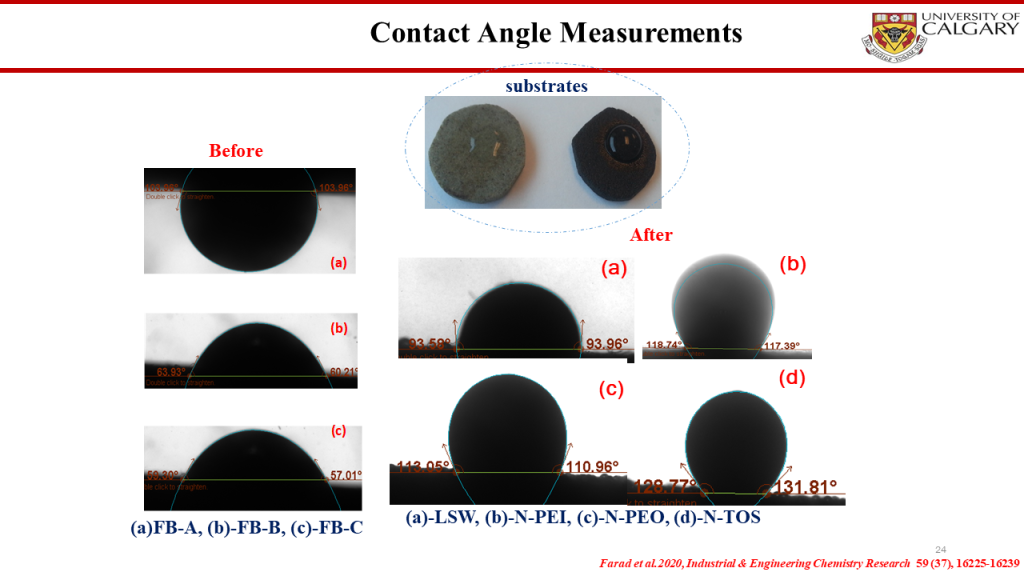Contact angle measurements are widely used to characterize the wettability of a liquid droplet on a solid surface. The contact angle is the angle formed between the tangent to the liquid droplet at the three-phase contact line (where the liquid, solid, and vapor phases meet) and the solid surface.
To perform contact angle measurements, the following steps are typically followed:
- Substrate Preparation: A solid substrate of interest is prepared, ensuring its cleanliness and appropriate surface characteristics. The substrate can be made of various materials such as glass, metals, polymers, or ceramics.
- Droplet Placement: A small droplet of the liquid to be studied is carefully placed on the solid substrate. The droplet can be deposited manually using a micropipette or via automated dispensing systems for precise control.
- Imaging: The droplet-substrate system is observed and imaged using techniques such as optical microscopy, high-speed imaging, or specialized contact angle measurement instruments. The images should provide a clear view of the droplet and the three-phase contact line.
- Contact Angle Measurement: The contact angle is measured by analyzing the acquired images. Various software tools are available to determine the contact angle automatically or through manual measurement. The tangent to the droplet’s interface at the contact line is typically fitted to a mathematical model, such as the Young-Laplace equation, to determine the contact angle.
- Repeat and Average: Multiple measurements are typically performed on different areas of the droplet-substrate system to account for any variations in the surface or droplet geometry. The contact angle values are averaged to obtain a representative measurement.
It’s important to note that contact angle measurements can be affected by various factors, including surface roughness, surface chemistry, temperature, and the properties of the liquid. Therefore, proper sample preparation and control of experimental conditions are crucial to ensure accurate and reproducible results.
Contact angle measurements provide valuable information about the wettability and surface interactions of materials. They are widely used in fields such as surface science, materials science, adhesion studies, coatings, microfluidics, and many other areas where understanding the behavior of liquids on solid surfaces is important.

